Evergreen spruce as it is impossible to suit the decoration of the household site. In contrast to hardwood, colors and shrubs, this coniferous culture does not lose decorative properties in no winter. We will tell about grades of ate, its features and rules for the formation of a beautiful crown in this article.
Brief information about the plant
Spruce is an evergreen plant of a family pine, numbering more than 50 different species. Culture is widespread in many corners of the globe. Certain varieties of spruce can be found in the countries of Northern Europe, North America, in Asia, as well as in China. As a rule, the plant is a high slim tree with a smooth straight trunk and a fluffy cone-shaped crown. Krone fir in diameter can be up to 8 m, culture is characterized by excellent frost resistance and longevity. The average lifespan of the Christmas tree is 250-300 years.
The needle of the plant can have a dark green or bluish tint. The fir looks beautifully in the garden as a single plant, it is successfully combined with shrubs and low-spirited deciduous trees. Sometimes the Christmas trees are planted with rows, creating a living hedge. The following features include the positive qualities of such a culture:
- The needles of the fools do not fade in the sun and does not fall in winter, so this plant looks great at any time of the year. Living fence from such trees always remains green and favorably contrasts with white snow.
- If you want to cover your garden from a curious eye, fall out ate along the fence. After a few years, the trees will grow and form a solid, almost impenetrable wall from the branches.
- Culture is convenient to use in landscape design in order to divide the garden on the functional zones.
- Fir applied as a wind protection, having planted them near the flower beds.
- This plant is unpretentious and durable, it is not subject to the development of fungi and mold.
- The Christmas tree can be considered also a very useful culture, because its needle has a healing aroma, and the tree itself can purify the atmosphere from harmful impurities and microbes.
Types and varieties of christmas trees
There is a huge number of types of firings, but in our country they are most popular as follows: barbed, ordinary, sisaya and Serbian ate. Consider the features of each such culture in more detail.
Ordinary fir
This plant is also called European fir. The trunk of her tree grows up to 30-50 m in height, the crown has a cone shape, the branches are located under a slight inclination to the ground. The bumps of the erect erect possesses therapeutic properties and are often used in the manufacture of drugs. The culture wood is an industrial value, it is used in construction, when carrying out trim, for the production of paper, etc. Of the decorative varieties of European fir in landscape design are widely used:
- AkroKona is a low and slow-growing grade, the height of the trunk of which is no more than 2-3 m. The location of the branches is horizontal, the diameter of the crown does not exceed 3-3.5 m. The needles of this spruce are painted in a dark green shade, and the spring tree branch Little red cones are covered. The fir of AkroKona is badly leaving in dry places and salted soils, and also does not like constant moisture stagnation.
- Maxwell's dwarfish, as a rule, does not grow above 2 m. This variety has a beautiful spherical crown of a bright green shade. Each year, the growth of branches is about 2-2.5 cm, young sprouts are painted in yellow-gray and brown colors.
- The wrapping fir of "inverse" looks very attractive thanks to the beautiful location of the branches that hang down and are very close to the tree trunk. In height, such a plant reaches 10 m, has a crown in the form of a narrow cone. When trimming such a fir, you can independently adjust its height, for this, the main escape is configured at the desired level and is sent down.
- Another dwarf variety of ate - "Thompa". It does not exceed 1.5 m in height, the diameter of its crown is the same. For 1 year, the tree grows by 3 cm, has a crooked conical shape and a little curved needles. The culture is unpretentious, transfers any soil, does not require special trimming.
Spiny fir tree
The second name of the culture - spruce blue. This plant is very popular among the gardeners precisely thanks to an unusual and very beautiful bluish-nasal shade of needles. The shape of the crown pyramidal, the height of the trunk can reach 45 m, the diameter of the trunk is 1.5 m. The fir is unpretentious, durable and frost-resistant, loves moderate humidity and lightly porous soil. Landscape design uses such varieties:
- "Glauing Globes" refers to dwarf varieties, such a tree does not grow above 2 m, branches grow by 10 cm for 1 year. While the plant is young, his crown is not too dense, has an irregular shape, loose. But as soon as the fir grows completely, the crown acquires the shape of the hemisphere and becomes noticeable more tight.
- Another variety of blue ate is the grade of Fastigiat. The tree possesses a narrow crown of a conical shape, the growth of the branches is directed upward, the trunk can grow up to 10 m in height.
- Cathedral cultures include a spruce of the Huppi variety, the height of which reaches 12-15 m. The branches of this culture are growing perpendicular to the trunk, the crown is dense, has a bluish-gray shade. Such a tree has a high strength, its branches withstand a significant load in the form of a thick layer of snow.
Yel Serbskaya
Serbian fir refers to tall cultures, the height of the adult plant reaches an indicator of 40 m. The barrel itself is quite thin, the diameter does not exceed 1 m. Crown has a narrow colonum shape, the growth of the branches is directed up. In the garden decoration, such varieties are most often used:
- Karel is a fir with a hemispherical crown. Young trees have rich-green needles, the needles of adult crops painted in a gray-green shade. This variety belongs to the dwarf, the tree of 10 years is grown to a height of only 60 cm, the diameter of the crown reaches 70 cm. Spruce is unpretentious, freezes frost and other adverse climatic conditions.
- Weeking spruce of the "Pendula Bruns" variety reaches a height of 10 m and has a narrow dense crown, the diameter of which does not exceed 1.5 m. The tree branches are directed down, the tint of the cortex is terracotta-gray. This plant grade loves good illumination, sufficient drainage and sour composition of soil.
Spruce sisaya
This culture is also called the fir of Canadian or white fir. The plant was made specifically in decorative purposes, it possesses an unusual cheese: it is painted on the top of the top, and at the bottom of the tree needles have a blue-white color. As designer elements, such varieties are used:
- Alberta Glove is a dwarf plant with a rowed crown and a rich-green shade needles. An adult tree reaches a height of 90 cm, the crown grows up to a diameter of 120 cm. The tree loves moderate humidity and is a frost-resistant plant.
- A low-spirited tree can be considered a spruce of the "Coniques". The trunk of an adult grows up to 2.5 m, but often the height of the plant does not exceed 1.5 m. The culture has a krona of a conical shape, prefers to grow in shaded places and is not too stable to strong frosts. For the winter, such a tree is better to cover.
Types of trimming of EDA
Trimming trees of this culture is divided into 2 types: decorative and sanitary. Decorative or molding trimming is carried out in order to create a beautiful crown shape and maintain it in such a state. The second purpose of such a procedure is to change the direction of growth of the tree. The adjustment of the direction of growth of the branches is carried out in such cases:
- if culture grows next to air communications;
- if the shadow of the tree interferes with good lighting of the rooms at home or other construction;
- if the shadow of the fir falls to other plants, which are necessary for growth in sun rays.
The molding trimming ate ordinary, like pruning other varieties of culture, should be carried out in the middle of summer, when the shoots stop growing. In this case, the probability of growth of secondary shoots is completely excluded, and in the remaining branches, international kidneys develop, from which new shoots will later develop. It is extremely recommended to carry out the trimming of freshers in winter or late in the fall because wood in damaged places is very vulnerable and will not stand frost. In addition, the kidneys, located directly near the sections, can dry.
It should be noted that only some types of firs are amenable to the molding trim. Often, such a procedure is carried out in order to create live elevations. Sometimes the crown of coniferous wood is artificially formed in the case when the top of the plant was damaged. In such a situation, the broken top is removed to the level of the branch below, and the trunk is tied to the rail. The underlying branch straightened up vertically and fixed on the rail, so this escape will grow further like the top of the tree.
It should be noted that the processing sections of coniferous crops with a garden boiler are not at all, since the plants are abundantly separated by a resin that serves protection of damaged wood.
The purpose of sanitary trim is to remove all unwanted elements from the tree: broken, dry, patients, damaged and hung down branches, etc. Dry vertices and dead branches are removed along with a part of living wood.
When you can crop fir
The first time the Christmas tree is taken to cut immediately after its transplant, because in the process of planting a tree to a permanent place, part of the root system is inevitably damaged. Thanks to the trimming of the tree, they are brought into line with the size of the root system. If it is correct and timely crop culture in the first year of his life, afterwards to repeat such a procedure will have to be infrequently. In addition, young and thin shoots are removed fairly easy, but the branches of an adult tree cut down harder.
As a rule, the trimming of firs is produced in order to give the tree of the original form. By itself, spruce has a fairly powerful trunk and can do perfectly do without trimming. Each year, the plant is examined for the presence of weak and sick branches - these fragments are removed during the sanitary trimming process. In rare cases, the trunk of ate can have side branches that significantly worsen the decorative qualities of the plant. Such additional trunks should also be cut.
The trimming of blue freshers is also not a mandatory procedure, since the crown has this culture with proper development formed independently and takes a smooth beautiful form. If the gardener plans to give the plant an unusual look, then it is necessary to do this until the culture has been 7-8 years old. More adult trees are desirable not to touch, giving them the opportunity to grow and develop independently.
Trimming freshers can be spent in the spring, but remove live elements during the growing season of the plant undesirable, since the risk of developing diseases in damaged places will be very high. The sanitary trimming involving the removal of dead fragments can be engaged in any season.
Features and rules
- Before conducting the procedure, it is important to decide in advance with the future form of the crown in advance and in order to carry out trimming. Young trees often cut in the form of a pyramid - such a trimming will help to form a dense and compact crown.
- It is best to use a manual sawder as a working tool. With this device you will be able to control the speed of work. For small bans, a secateur is suitable, branches at an altitude of up to 6 m can also be removed using a rod saw. Sleeper scissors or ax for such a work will not suit, as non-accurate sections are spent longer and affected infections.
- When cutting escape, you should make sure that a young sprout is present near its base. If there is no such sprout, it means that the remote branch will perish.
- When forming the crown, the first thing you need to cut the central conductor at the level of 2-3 m. The slice must be located above the formed kidney. It is also desirable that the kidney has been from the northern side of the trunk - so you will get a stronger and even plant.
- Trimming ate helps to make a crown more dense and thick, because the kidney of the growth of new escape is developing under each slice.
- Cutting can only be carried out on young shoots, after having previously convinced that, after the procedure, green needles remain on the branches.

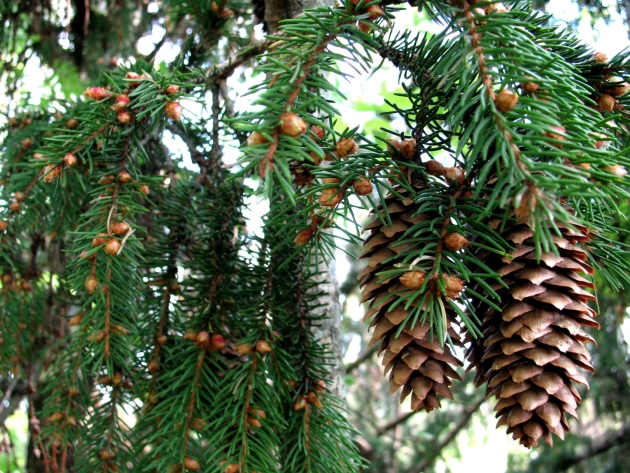
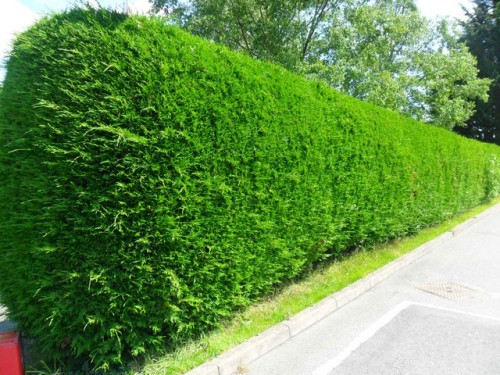
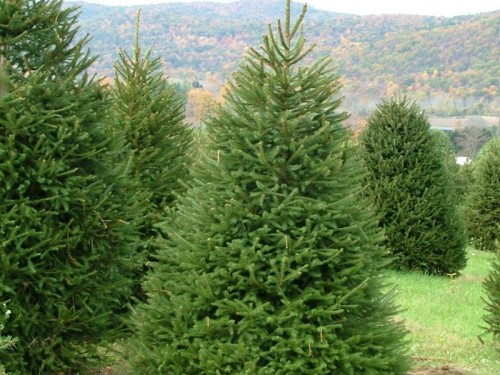
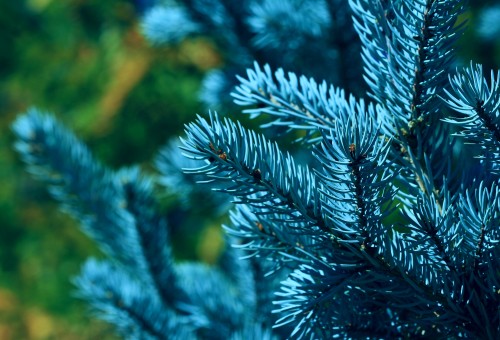

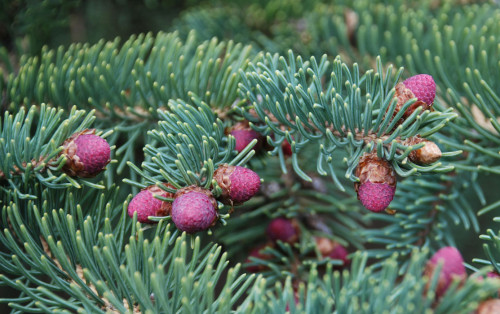
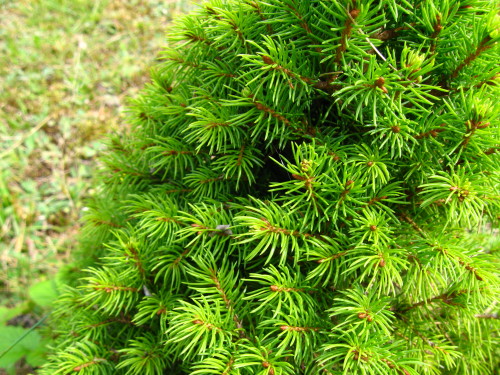
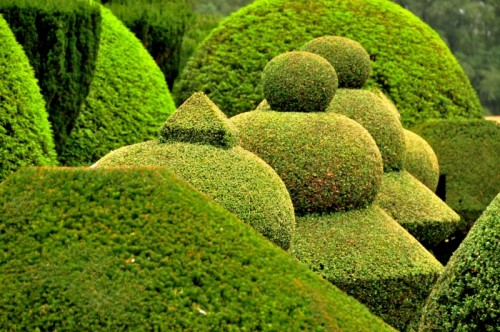
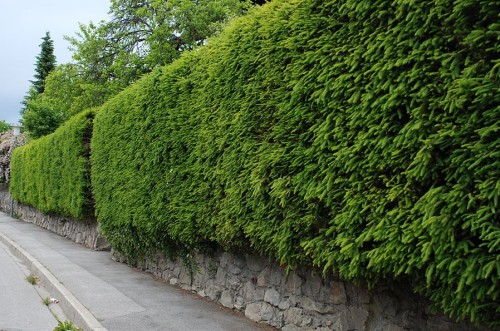












 Start a discussion ...
Start a discussion ...